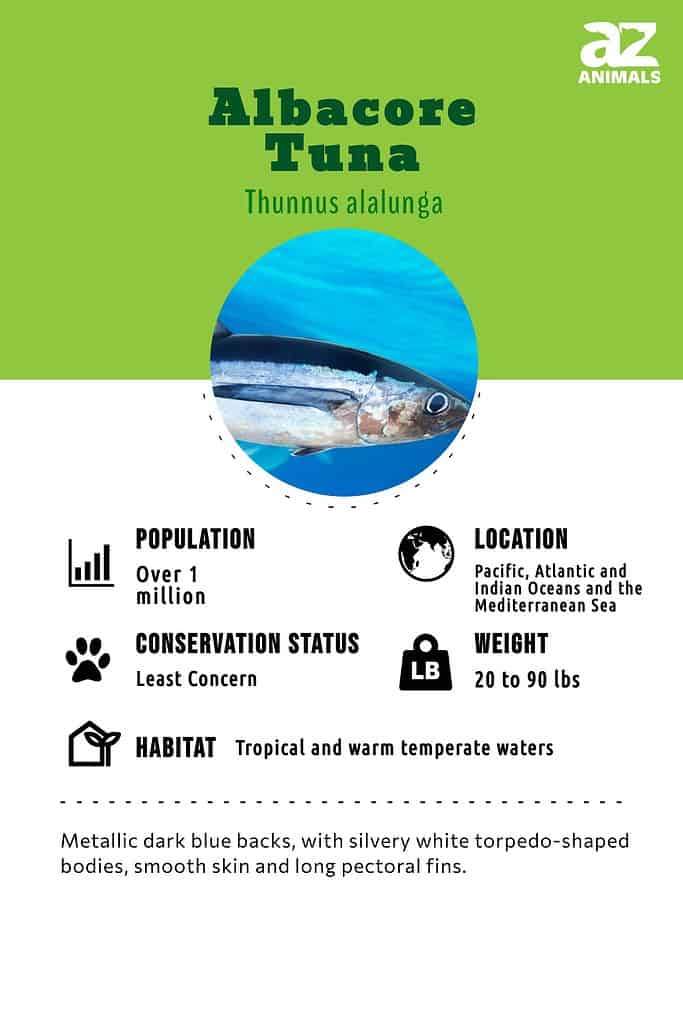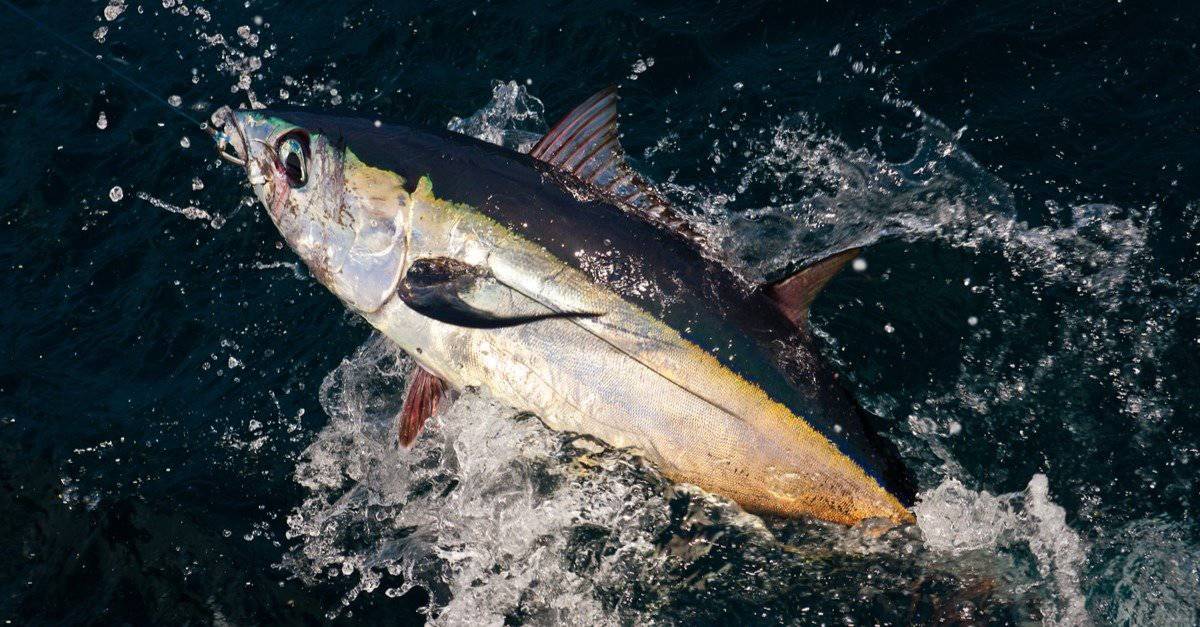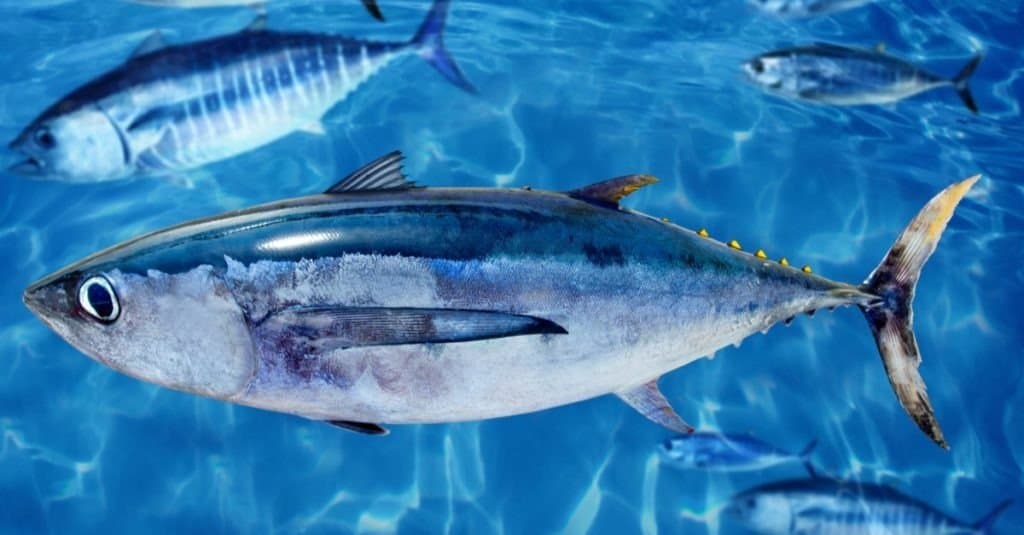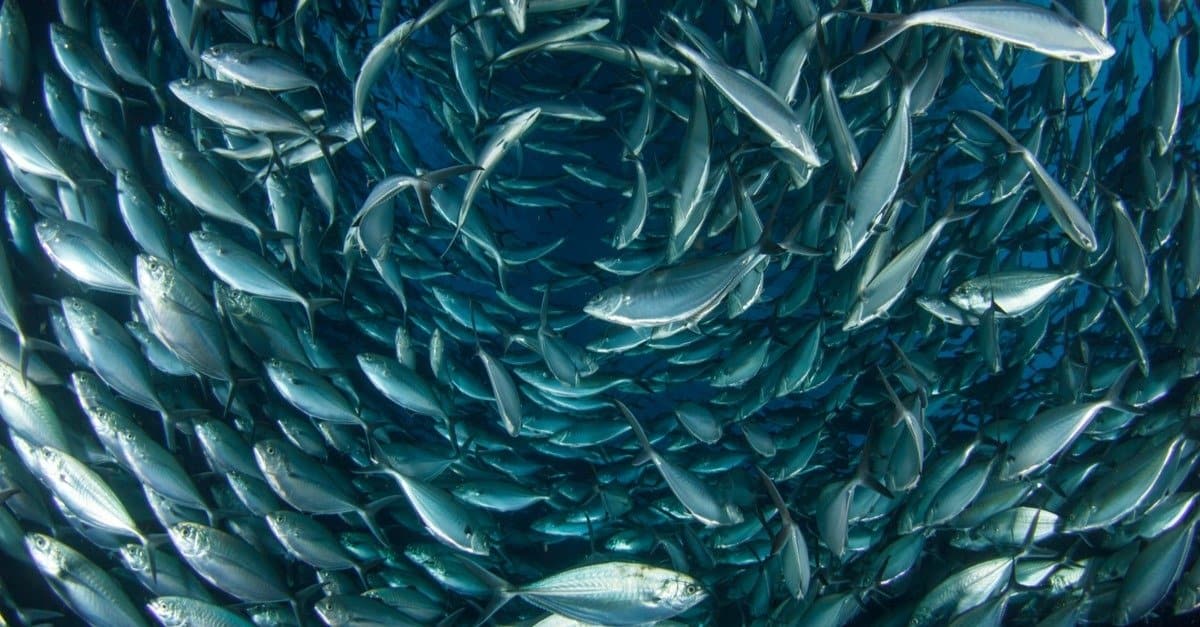Albacore Tuna
Thunnus alalunga
The albacore is a very fast swimmer
Advertisement
Albacore Tuna Scientific Classification
- Kingdom
- Animalia
- Phylum
- Chordata
- Class
- Actinopterygii
- Order
- Scombriformes
- Family
- Scombridae
- Genus
- Thunnus
- Scientific Name
- Thunnus alalunga
Read our Complete Guide to Classification of Animals.
Albacore Tuna Conservation Status
Albacore Tuna Facts
- Main Prey
- Fish, crustaceans, cephalopods, and mollusks
- Group Behavior
- School
- Fun Fact
- The albacore is a very fast swimmer
- Estimated Population Size
- More than a million
- Biggest Threat
- Overfishing
- Most Distinctive Feature
- The long pectoral fin that stretches across the body
- Other Name(s)
- Longfin tuna
- Gestation Period
- A few days
- Habitat
- Oceans
- Predators
- Sharks, billfish, rays, humans, and other tunas
- Diet
- Carnivore
- Type
- Ray-finned fish
- Common Name
- Albacore tuna
- Number Of Species
- 1
View all of the Albacore Tuna images!
The Albacore Tuna, or longfin tuna, is a large smooth-skinned pelagic fish that roams the open oceans in massive schools.
As one of the main cornerstones of the world’s fishing industries, albacore stocks are carefully managed by governmental agencies to prevent overfishing.
3 Incredible Albacore Tuna Facts
- Schools of albacore can stretch up to 19 miles wide. They are sometimes accompanied by skipjack, yellowfin, and bluefin tuna.
- Albacore swims at speeds of around 50 miles per hour.
- Albacore has a very high metabolism and consumes up to 25% of its body weight in food per day.

Evolution And History
The albacore comes from a large family of tuna that is generally split into two species – the Thunnus and the Sardini. The Thunnus are often considered the “true” tunas although they most likely have origins from the same evolutionary timeline. The tuna can be traced back to an exothermic ancestor based on early tuna fossils that were discovered from the late Paleocene era in sea deposits.
Classification And Scientific Name
The scientific name of the albacore is Thunnus alalunga. This appears to be the combination of two words: ala, meaning wing, and lunga, meaning long.
Types Of Albacore

Their are 5 species that are called albacore tuna.
©David Vogt/Shutterstock.com
While albacore is part of the species of tuna called Thunnini, which incorporates 15 different types of tuna, there are 5 specific species of tuna that are referred to as albacore, depending on which part of the world you’re in. These 5 are:
- Blackfin tuna (Thunnus atlanticus)
- Yellowfin tuna (Thunnus albacares)
- Yellowtail amberjack (Seriola lalandi)
- Kawakawa (Euthynnus affinis) – this is a false albacore, which means that they have differences in coloration, body markings, teeth, and where they search for food.
- Little tunny (Euthynnus alletteratus) – another false albacore.
Appearance
The Albacore is one of the smallest tuna species. Weighing around only 80 pounds, it is just slightly larger than the skipjack. The albacore has a dark blue or gray back, which fades to silver or white around the stomach. The most prominent characteristic is the massive pectoral fin on the side of the body. This is how it acquired the alternate name longfin.

©lunamarina/Shutterstock.com
Distribution, Population, And Habitat
The albacore has distinct stocks in the northern Pacific and southern Pacific. It’s also found in the Atlantic, the Indian Ocean, and the Mediterranean Sea. According to the IUCN Red List, this species is considered “least concern“. Although many populations are responsibly managed, others are in steep decline.
Predators And Prey
The albacore is a top open sea predator. Its speed and size give it an inherent advantage over many other species.
What Does The Albacore Eat?
The albacore is the only tuna species that feeds primarily on squid and other cephalopods. Crustaceans and fish are secondary sources of food.
What Eats The Albacore?
The albacore is preyed upon by billfish, sharks, rays, and other tuna.
Reproduction And Lifespan

Returning to tropical waters each year to reproduce, the female will release eggs into the water.
©Rich Carey/Shutterstock.com
The albacore returns to the tropical waters every year around the summer season to reproduce. Depending on her size, the female will release between 800,000 and 2.6 million eggs into the water. The few albacores that survive into adulthood reach sexual maturity at five or six years and live up to 12 years.
Albacore In Fishing And Cooking
The albacore is critically important to commercial and recreational fisheries around the world. With its mild taste and firm meat, this species accounts for about 30% of the canned tuna market. Common recipes include grilled albacore, steaks, salads, sushi, and sashimi.
View all 194 animals that start with AAlbacore Tuna FAQs (Frequently Asked Questions)
What is albacore?
The albacore is a species of true tuna. It can be easily identified by the particularly long pectoral fins and the blue/silver color.
What is an albacore vs. regular tuna?
The albacore is considered to be a type of tuna species, but there are differences. Check out more information here!
Why is albacore bad for you?
Albacore meat may contain high levels of mercury that accumulate in the ocean and then filter through the food chain. That is why you should limit consumption of albacore to only about 6 ounces per week.
Is it safe to eat raw albacore?
Raw or lightly cooked albacore is an important ingredient in many recipe types, but it will always have more inherent health risks than heavily cooked albacore.
Where is the albacore found?
Albacore is found all over the world’s oceans.
How many Albacore Tunas are left in the world?
There are more than a million Albacore Tunas.
What is an interesting fact about the Albacore Tuna?
The albacore is a very fast swimmer.
How fast is an Albacore Tuna?
An Albacore Tuna can travel at speeds of up to 50 miles per hour.
How does skipjack tuna compare to albacore tuna?
The primary difference between skipjack tuna and albacore tuna is that skipjacks are generally smaller, have shorter pectoral fins, and are considered a lower quality of meat for cooking. The annual skipjack catch is more than 10 times the size of the albacore tuna catch.
How do Albacore Tunas have babies?
Albacore Tunas lay eggs.
What are the key differences between yellowfin tuna and albacore?
The key differences between yellowfin tuna and albacore are their size, body shape, color, and lifespan.
Thank you for reading! Have some feedback for us? Contact the AZ Animals editorial team.
Sources
- WWF, Available here: https://www.worldwildlife.org/species/albacore-tuna
- NOAA Fisheries, Available here: https://www.fisheries.noaa.gov/species/pacific-albacore-tuna

















